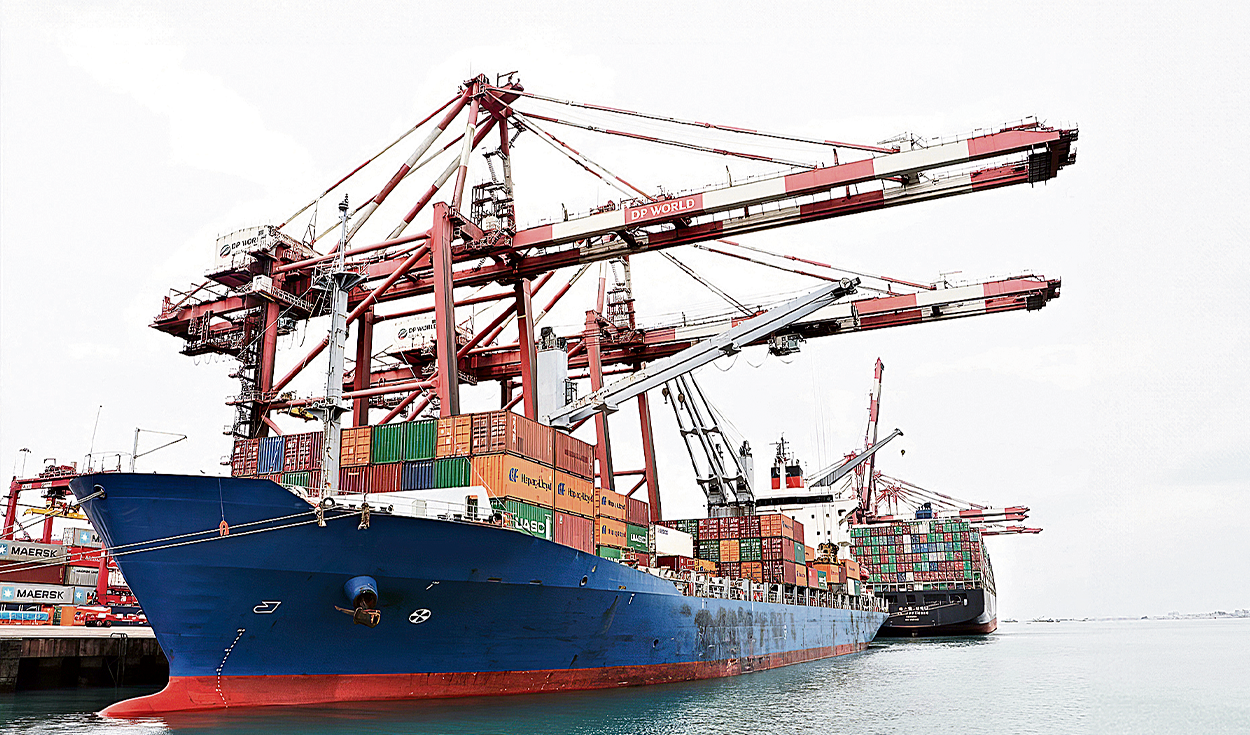
The new Cabotage Law, which could generate savings of almost US$700,000 for Peruvian exporters, has remained frozen since last year in the Congress of the Republic, despite the imminent opening of the Chancay megaport.
What is cabotage? It is the service provided by a ship to pick up cargo from one port and leave it in another in the same country. Currently, this service can only be served with national flag ships.a reality that PL 5175/2022, presented by the Ministry of Transportation and Communications (MTC) – exactly one year ago – seeks to change for the good of the sector.
With the new law, for example, a ship coming from the north with containers from USA o Mexico could pick up more cargo in Paita, then Chimbote, and finally connect with Callao, or Chancay, after its inauguration. The same to the south, always with the objective of boosting the opportunities for products to reach the main terminals, where the largest ships leave.
Today this is not the case, since ships have to enter Peru and directly unload at their destination port and without stops, a situation that, according to the Ministry of Foreign Trade and Tourism (Mincetur), affects no less than 6,600 exporting microenterprises in Peru. .
“An annual saving of US$700,000 is estimated for companies that would use cabotage alternatively.. This is in the conditions we are in now, but imagine when the agricultural frontier. We will have more critical cargo to transport,” assures the Vice Minister of Foreign Trade, Teresa Mera, for La República.
Cabotage would also drastically reduce the transit of merchandise by land, although without removing its operators from the market: it will no longer be necessary to travel by road to Lima or Chancay to bring mangoes from Piura, it would be enough to take the fruit by boat from the port of Paita to Callao.
It should be noted that the cabotage in question is only for containers – a service that does not exist today in Peru – but not for liquid or bulk cargo.
overboard
After passing through the Transportation Commission, the PL was approved in the first vote by the Plenary of Congress last November, but then it was inexplicably proposed to send it to the Foreign Trade Commission. A reconsideration was then proposed, and since then it has remained frozen.
Favio León, president of the Peruvian Association of Port Operators (Asppor), clarifies that The Executive’s initiative does not risk national sovereignty nor does it affect the scope of competence of the Merchant Navy.
He explains that the private sector has already tried to carry out internal cabotage with the Peruvian flag, but it turned out to be economically unviable. Therefore, it is “crucial” to take advantage of the transit of foreign ships, which will not enjoy preferences either, since they must adjust to the commercial conditions that the Peruvian State demands.
“Definitely, if we want to be a port hub for the world, internal cabotage is strategic. Here we all win and the Congress of the republic has the last word, as it will give exporters the opportunity not only to overcome the weather factor by sea when transporting their merchandise, but even the social conflictsand in a less polluting way,” highlights León.
Recently, the company Cosco Shipping Ports Chancay confirmed that the inauguration of the terminal, which will be able to receive triple E ships with loads of between 18,000 and 24,000 containers, will take place in November, just for APEC. Between January and February 2025 the first ships should leave.
Reactions
Teresa Mera Gómez, vic. of Foreign Trade
“The port of Chancay is about to be inaugurated and the project has not finished coming to fruition. Cabotage is urgent for all Peruvians, as it is an important piece for the national logistics system.”
Favio León Lecca, president of Asppor
“The activities of coastal ports such as Matarani, Ilo, Paita, Salaverry and Chimbote will increase. This will generate greater competitiveness for regional exports.”
Source: Larepublica
Alia is a professional author and journalist, working at 247 news agency. She writes on various topics from economy news to general interest pieces, providing readers with relevant and informative content. With years of experience, she brings a unique perspective and in-depth analysis to her work.












